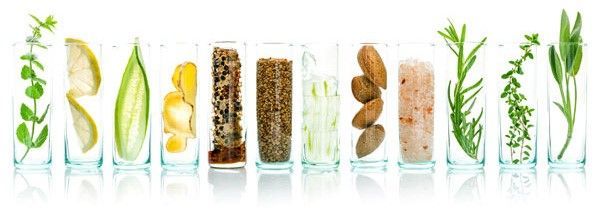How Nitrates Help Power Spacecraft and Rescue Missions
What if the same compound that boosts crops in the field could also launch a rocket into space or save lives in a remote rescue mission?
In the world of advanced engineering and extreme environments, chemical compounds play critical and often surprising roles. Among them, nitrates stand out not only for their importance in agriculture, but also for their high energy potential and versatility. From propelling spacecraft beyond Earth’s atmosphere to powering emergency flares and portable energy systems, nitrates are silent heroes in modern science and technology.
This post explores the lesser-known but fascinating role of nitrates in aerospace and emergency operations. We’ll look at how these reactive nitrogen compounds are used in solid rocket propellants, gas-generating systems, and life-saving equipment in critical missions where reliability and power are paramount. As we uncover their contributions to space exploration and rescue technology, you’ll gain a new appreciation for how this familiar compound continues to shape some of humanity’s boldest and most vital endeavors.
What Are Nitrates?
Nitrates are chemical compounds containing the nitrate ion (NO₃⁻), which consists of one nitrogen atom bonded to three oxygen atoms. This structure gives nitrates strong oxidizing properties, meaning they can readily supply oxygen to support combustion. Common nitrate compounds include ammonium nitrate (NH₄NO₃), widely used in fertilizers and explosives; sodium nitrate (NaNO₃), often used in food preservation and industrial processes; and potassium nitrate (KNO₃), historically known as saltpeter and a key ingredient in gunpowder.
Nitrates exist in both natural and synthetic forms. Naturally, they are found in mineral deposits and formed through biological nitrogen cycles in soil and water. Synthetic nitrates are manufactured to achieve higher purity and consistent performance, especially for industrial and aerospace applications.
The key properties that make nitrates valuable include their oxidizing capability, which enables them to release oxygen during chemical reactions, and their ability to generate significant thermal energy upon decomposition. These characteristics make nitrates essential components in propulsion and emergency energy systems.
Why Nitrates Are Ideal for Energy Applications
Nitrates have a high oxygen content, enabling efficient and powerful combustion. They strike a balance between stability and controllability, making them safe to store but highly reactive when needed. Additionally, nitrates provide compact energy storage, which is crucial in applications such as spacecraft and rescue equipment, where space and weight are limited.
Nitrates in Spacecraft Propulsion Systems
Nitrates have played a crucial role in spacecraft propulsion, especially in solid and hybrid rocket fuels, dating back several decades. Among various oxidizers, ammonium nitrate (AN) has been widely used as a key component in solid propellants due to its reliable oxidizing properties, affordability and availability. Unlike liquid fuels, solid propellants are simpler to store and handle, making them ideal for certain rocket applications.
Ammonium nitrate acts as the oxygen supplier in these solid rocket fuels, enabling the combustion of the fuel binder and other components to generate high-pressure gas that propels rockets forward. Its stability at room temperature and ease of manufacturing have made it a popular choice in both amateur and professional rocketry.
When compared to traditional liquid rocket fuels such as hydrazine, ammonium nitrate-based solid propellants offer several advantages. Hydrazine, while highly energetic, is also toxic, carcinogenic, and requires complex handling procedures. In contrast, ammonium nitrate-based fuels are safer, less expensive, and more environmentally friendly, though they generally deliver lower specific impulse (a measure of propulsion efficiency). This trade-off has driven ongoing research into improving nitrate-based propellants’ performance.
Currently, research and development efforts focus on
green nitrate-based propellants aimed at combining the environmental benefits of nitrates with enhanced energy output and stability. These newer formulations seek to reduce harmful emissions and replace toxic components in rocket fuels, aligning with global goals for sustainable space exploration.
Real-Life Missions Using Nitrate-Based Fuels
Nitrate-based fuels have been successfully used in various missions, particularly in sounding rockets, booster systems, and small satellite launches. For example, sounding rockets, which perform suborbital research flights, often utilize solid propellants containing ammonium nitrate due to their simplicity and reliability.
Space agencies like
NASA, the European Space Agency (ESA), and the Indian Space Research Organisation (ISRO) have all employed or tested nitrate-based propellants in their launch vehicles and experimental programs. These fuels enable cost-effective access to space for small payloads and research instruments, helping advance both scientific knowledge and technology development.
Nitrates in Emergency and Rescue Missions on Earth
Nitrates are not only vital in space exploration but also play a critical role in powering emergency and rescue missions here on Earth. Portable generators and heaters fueled by nitrate-based compounds provide reliable energy sources in remote or extreme environments where conventional power is unavailable. Their compact size and high energy density make them ideal for rapid deployment in crises.
In harsh environments such as the Arctic, Antarctic, or deep-sea operations, self-contained rescue gear often relies on nitrate-fueled energy systems to deliver heat and power to essential equipment. These systems are designed to function reliably in extreme cold and isolation, where battery performance may degrade or refueling options are limited.
Moreover, nitrates are increasingly integrated into disaster relief drones and deployment kits, providing a lightweight and efficient power source. These drones can quickly reach inaccessible areas after natural disasters, delivering supplies or conducting search operations powered by nitrate-based energy cells. The rapid ignition and steady energy output of nitrate fuels make them invaluable in time-sensitive rescue efforts.

Case Studies in Rescue Tech
Several real-world rescue operations have successfully utilized nitrate-based fuel cells and devices, especially under challenging conditions. For instance, high-altitude rescue missions in mountainous regions benefit from portable nitrate-fueled heaters that operate effectively in low-oxygen, low-temperature environments where conventional fuels fail.
Similarly, nitrate-fueled power units have been deployed in polar expeditions, providing dependable warmth and electricity to isolated teams. These cases highlight nitrates’ unique ability to deliver compact, stable energy solutions crucial for survival and mission success in extreme conditions.
Benefits of Nitrates Over Traditional Energy Sources
Nitrates offer several significant advantages compared to traditional energy sources, making them especially valuable in demanding applications like spacecraft propulsion and emergency rescue missions. One of their primary benefits is their lightweight and compact storage. Nitrate-based fuels and energy systems can store large amounts of oxygen and energy in a small volume and low weight, which is critical when every kilogram counts—whether in space or during a rescue operation where portability is essential.
Another key advantage is their long shelf life. Unlike many conventional fuels or batteries that degrade over time or under harsh conditions, nitrates remain chemically stable for years when properly stored. This longevity ensures that nitrate-fueled devices and propellants are ready to perform reliably even after extended periods of inactivity—a crucial factor for emergency preparedness.
In urgent situations, nitrates enable rapid energy release, providing immediate and intense power when needed most. This quick response is vital for rocket launches, emergency heaters, or power generators in rescue kits, where delays could cost lives or mission success.
From an environmental and safety perspective, nitrates are generally safer and less toxic than some traditional fuels, such as hydrazine or kerosene-based propellants. While still reactive, nitrate compounds tend to produce fewer harmful emissions and pose lower handling risks. This reduces the environmental footprint of their use and improves safety for operators and the surrounding environment.
Overall, nitrates’ combination of efficiency, stability, and safety makes them a superior choice over many conventional energy sources in both aerospace and terrestrial emergency applications.
Challenges and Limitations
While nitrates offer many advantages, their use also comes with challenges and limitations that must be carefully managed. One major concern is handling and stability. Although nitrates are generally stable under normal conditions, they can become hazardous if exposed to high temperatures, friction, or contamination. Improper handling may lead to accidental decomposition or ignition, requiring strict safety protocols during storage, transport, and use.
Regulatory issues also pose significant hurdles. Many nitrate compounds, particularly ammonium nitrate, are classified as explosives or hazardous materials under international regulations. This classification means their production, distribution, and application are subject to stringent controls and licensing, which can complicate logistics and increase operational costs.
Environmental considerations are another important limitation. The decomposition of nitrates during combustion or chemical reactions can produce nitrogen oxides (NOₓ), which contribute to air pollution and have harmful effects on ecosystems and human health. Additionally, improper disposal of nitrate-containing waste can lead to soil and water contamination, affecting biodiversity and
water quality.
Addressing these challenges requires ongoing research into safer formulations, improved handling techniques, and environmentally friendly alternatives. Despite these limitations, nitrates continue to be a vital component in propulsion and emergency technologies due to their unique energy properties.
The Future of Nitrate-Powered Technologies
The future of nitrate-powered technologies is bright, driven by ongoing innovations that aim to enhance energy efficiency, safety and sustainability. One exciting development is the emergence of solid-state nitrate batteries. These next-generation energy storage devices use nitrate compounds as key components, offering higher energy density, improved thermal stability, and longer lifespans compared to traditional batteries. Such advancements could revolutionize portable power systems for both terrestrial and space applications.
In the realm of space exploration, nitrates are increasingly being integrated into autonomous systems. Robots, drones, and landers operating on distant planets or moons require reliable, lightweight, and compact power sources. Nitrate-based fuels and energy cells provide the rapid energy release and long shelf life needed for these unmanned missions, enabling extended operation without frequent resupply.
Looking further ahead, nitrate-powered propulsion and power systems hold strong potential for Mars and lunar missions. The ability to store and release energy efficiently in compact forms is critical for habitats, rovers, and launch vehicles in these environments. Moreover, ongoing research into green nitrate-based propellants aligns with sustainable exploration goals, aiming to reduce environmental impact both on Earth and in space.
As technology advances, nitrates will likely play a pivotal role in enabling humanity’s next giant leaps beyond our planet.
FAQs
What types of nitrates are used in rocket fuels?
The most common nitrates in rocket fuels are ammonium nitrate (AN) and potassium nitrate (KNO₃). Ammonium nitrate is widely used as an oxidizer in solid propellants due to its stability and energy output.
Are nitrate-based fuels safe?
When handled properly, nitrate-based fuels are generally safer and less toxic than some traditional propellants like hydrazine. However, they still require careful storage and handling to prevent accidental ignition.
How are nitrates different from other propellants?
Nitrates serve as oxidizers, supplying oxygen to burn fuel, often in solid or hybrid rockets. Compared to liquid fuels, nitrate-based propellants are simpler to store, less toxic, and provide compact energy storage, but may have lower efficiency.
Can nitrates power spacecraft on long missions?
Nitrates are mainly used in solid boosters and short-duration propulsion. For long missions, liquid or electric propulsion systems are often preferred, but research into advanced nitrate fuels is ongoing.
Are there eco-friendly nitrate options?
Yes, current R&D focuses on green nitrate-based propellants designed to reduce emissions and environmental impact, making nitrate fuels cleaner and more sustainable.
Conclusion
Nitrates may be best known for their role in fertilizers, but they are much more than agricultural chemicals—they are hidden energy heroes powering some of humanity’s most extreme and vital missions. From propelling spacecraft beyond Earth’s atmosphere to fueling lifesaving equipment in the harshest environments on our planet, nitrates provide reliable, compact, and efficient energy solutions where it matters most.
Their unique chemical properties enable rapid energy release, long-term stability, and safer handling compared to many traditional fuels. As research pushes forward into greener, more advanced nitrate-based technologies, their impact on both human survival and space exploration is set to grow even further.
Companies like
DECACHEM play a vital role in supplying high-purity nitrates that meet strict quality and safety standards, enabling their use in cutting-edge aerospace and rescue technologies.
From field to fuel — nitrates are shaping the frontier of science, quietly driving innovation and expanding the possibilities of what we can achieve in exploration and rescue.
















